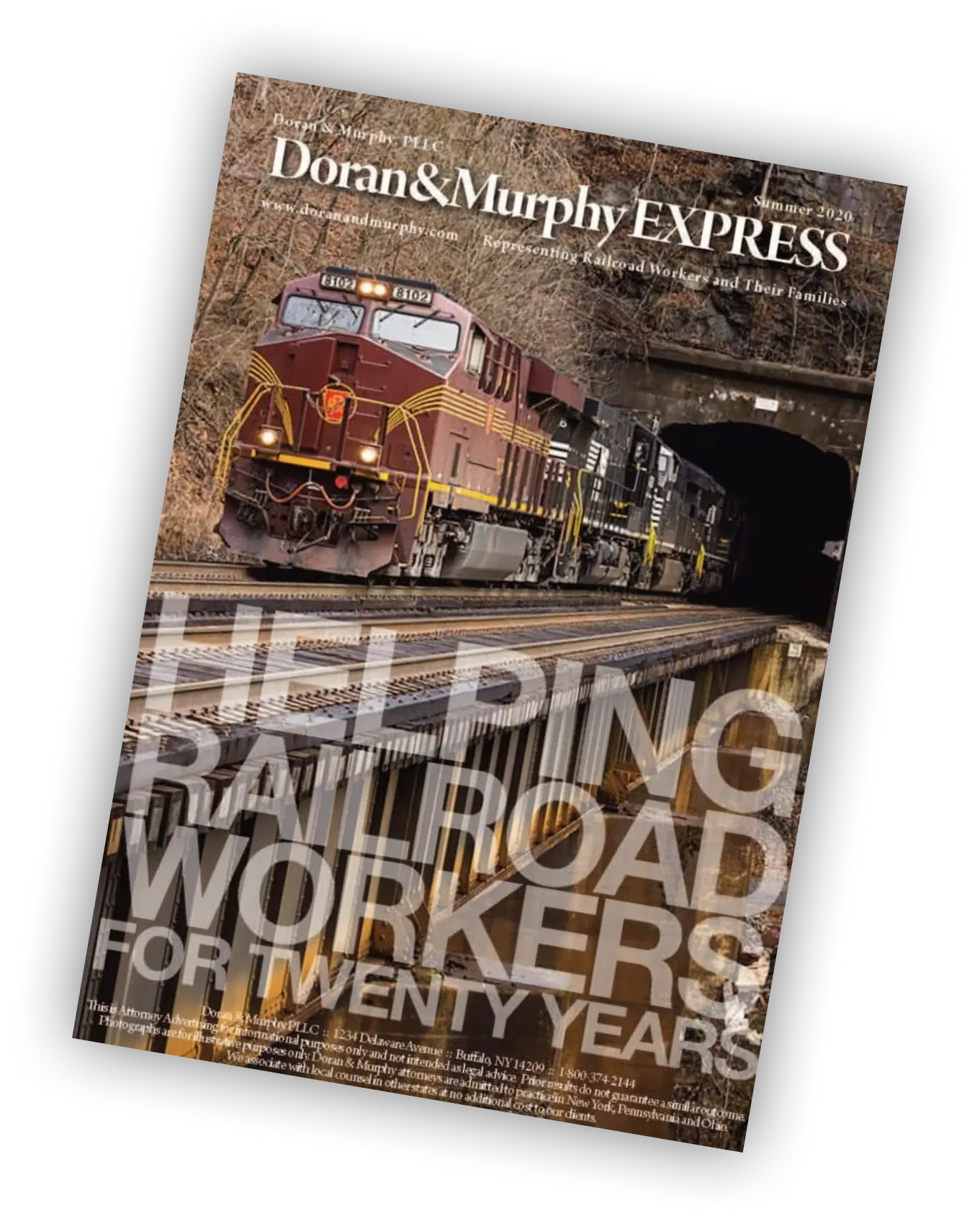
For many years, Doran & Murphy has been working hard to protect the interests of injured railroad workers. These workers have been injured doing just about any task imaginable– operating switches, tying handbrakes, riding on railroad cars, repairing locomotives or rail cars, and the list goes on. While we handle cases against railroads all over the United States, this blog will focus on the Union Pacific Railroad (UPRR) and cases for active and retired employees who have cancer. We have handled cases for Union Pacific workers in virtually all of the 23 different states where it operates across the western half of the country. These workers were in different crafts and jobs, including conductors, engineers, track workers, signal workers, carmen/car inspectors, clerks, and diesel repair shop workers. Some of them never smoked cigarettes, and others smoked for many years in the past. Some of these workers only worked for the railroad for 15 years, while others worked for 40 years or more. Some workers had mesothelioma or lung cancer, others had throat cancer (laryngeal or esophageal), colon cancer, stomach cancer, kidney cancer, bladder cancer, or blood cancer (leukemia or non-Hodgkin lymphoma). However, what they all had in common was diesel exhaust exposure.
Prior blogs have discussed that the nation’s railroads knew all the way back to 1955 that diesel exhaust could cause cancer. Why is that significant? Because the railroads never shared that information that diesel exhaust was dangerous with workers until recently. What makes the railroad’s awareness of the diesel cancer hazards all the more egregious is the fact that the railroads flatly denied that diesel exhaust was hazardous in court cases.
In recent cancer cases against UPRR, my office has uncovered many helpful documents that show some shocking things:
- At a May 1965 meeting attended by medical department representatives from various UPRR predecessor railroads, a presentation was made which, according to verbatim meeting minutes, advised these railroad representatives that, “In previous years, due to financial harassments, some railroads overlooked shop ventilation. Even today, not all shops and roundhouses are equipped with ventilatory fans, and not all fans are in working order. During the winter months, shops are poorly ventilated, due to windows and doors being closed, and men actually are working under conditions less than ideal.”
- Despite the awareness of the diesel exhaust hazards, one of the UPRR predecessor railroads, which attended that meeting the month before, wanted to lower the roof in a repair shop. The union wrote a letter in June 1965 advising that lowering the roof would “multiply our problem of diesel exhaust fumes and the resulting exposure to the employees working in the diesel shop” and “greatly increase the exposure to the employees of diesel exhaust fumes.”
- Most alarmingly, at the UPRR North Little Rock Diesel Repair Shop, one UPRR manager noted in a 1986 letter that, “An excess amount of pollutants in the air has impacted the roof, and oxidation of the metal components must be halted to prevent extensive roof damage.” It appears that the UPRR was more concerned with structural roof damage from diesel exhaust than with employees’ lungs and health!
- Throughout the 1980’s a number of articles were being published in reputable medical journals that noted the link between certain cancer types and diesel exhaust. As an example, a famous study published in 1987 by Dr. Eric Garshick and his colleagues noted that railroad workers had a higher incidence of getting cancer than non-railroad workers. A “date received” stamp of 9/22/87 from the UPRR safety department appears at the top of the article, so they cannot deny being aware of this landmark study. Additional details about the Garshick study can be found in a prior blog.
Against this background, it is difficult to make sense of the UPRR’s decision not to warn workers about diesel exhaust hazards for decades in the latter half of the 20th century. The only explanation is that providing such warnings would have subjected the UPRR to employee claims, which they wanted to avoid. A prior blog highlighted that certain railroads did not provide workers with safety recommendations about asbestos because they were concerned that “Publicity on the above [safety recommendations] might suggest the making of claims.” Perhaps the UPRR and the nation’s other railroads were worried about cancer claims, so they chose to hide the diesel exhaust hazards until the 2000s. We will never know for sure why railroads chose not to warn employees about diesel cancer hazards, but that decision undoubtedly led to the loss of countless railroad workers from cancer.
If you or a loved one worked for the railroad and suffers from cancer, call the attorneys at Doran and Murphy, PLLC, at 1-800-374-2144, or you can contact us online here. We have been representing railroad workers in all different crafts in injury cases and for cancer for over 30 years. We have extensive experience in cases against the Union Pacific and every other railroad throughout the country!





